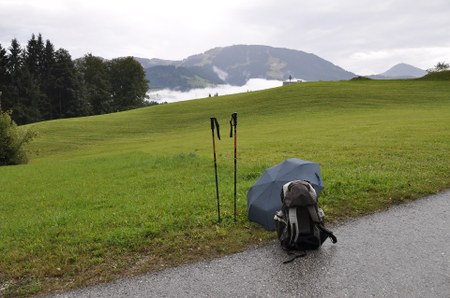
It sounds like clickbait - “I rucked a mile a day for 31 days, and here’s what happened!” But I did indeed ruck at least a mile each day in January 2021. Here’s what happened.
In an attempt to ditch the double-digit weight gain from the pandemic lockdown, last fall I took up rucking (walking and working out with a weighted backpack or “rucksack” and/or a sandbag) with rucks of 1-3 miles and bodyweight exercises a few times a week. For 2021, I committed to GORUCK Tribe, a four-year (!) program of rucking, bootcamp-style WODs (workouts of the day, usually longer rucks plus exercises while wearing your rucksack), a themed reading assignment, and additional tasks as assigned by the Cadre (inspirational coaches, mostly Special Operations veterans). Your reward for completing all activities for the month is a unique patch you can affix to your rucksack or cap.
The Cadre didn’t want to break us too early, so January’s daily ruck was just 1 mile. Miss a day? Do a 5-mile penalty ruck. Fortunately I’m mostly working from home and was able to ruck a circuit near my house. In the rain, in the dark, freezing temps, it didn’t matter - anything to avoid that penalty! The WOD was so tough that we only had to complete it once during the month. I failed on the first attempt, completing both pre- and post-workout 3-mile rucks but just seven of the required twelve sets of exercises. The combination of standing rows, burpee-squats, mountain climbers, and getups with the rucksack left me nauseated and gasping for air. Knowing what to expect made the second attempt somewhat easier, but I got through six sets and had to stop again. I still got the two 3-mile rucks done. I’ll stick my January patch in a drawer and make sure I earn it another day, when I’m in better shape.
I was perfect on the “soft stuff.” The reading assignment was on point - Tribe by Sebastian Junger, which was available as an audiobook and was a good listen while rucking. The book set the tone to instill confidence and a sense of comradery with our virtual tribe at each step of the journey. The additional task was to reach out to someone we hadn’t seen or heard from in a while; also easy given the pandemic. I exchanged lengthy emails with good friends in Oregon whom I haven’t seen since 2017 and told them about my new endeavor.
All told, I rucked 62.2 miles in January and lost 11.4 pounds, and all other body metrics saw improvement. Additional tweaks: 16/8 intermittent fasting beginning on the 20th of the month (doing it “goofy,” skipping dinner instead of breakfast). 5- to 30-minute workouts and cool downs using Apple Fitness+. Increased water consumption. A few solo and club hikes.
I will stick with the program, continuing to monitor these stats and perhaps providing an update after Year 1. On to February: four 5-mile rucks, one WOD (two rounds of sandbag cleans, short ruck, burpee step-ups, and another short ruck), Warrior’s Creed by Roger Sparks, and four hand-written letters including one that attempts to make amends.
Of course, you don’t need an organized program to take up rucking. Here are some thoughts on getting started:
- If you’re an experienced day hiker or backpacker, you already have the basic gear - boots and a daypack/backpack that can accommodate 20-50 pounds of weight.
- Add in two gallon water jugs (16.6 lbs.), a 3-liter water bladder (6.6 lbs.), and one or two 5 lb. dumbbells and you’re off to a great start.
- Whether you’re rucking in low hikers/trail runners or over-the-ankle boots, replace the cheap foam insoles with more rigid insoles with arch support to help your feet bear the extra weight.
- Consider trekking poles adjusted to leave a 90-degree bend in your elbows, with the height adjusted +/- 5-10 cm, for long stretches of uphill and downhill travel.
- Use a GPS app so that you can call on 1-5 mile rucking routes from your front door. Protect your back by adding weight gradually over several weeks.
Purpose-built rucking gear will generally be safer and more comfortable. A rucksack carries the weight a bit higher and centered on your back and won’t jostle around. A cordura sandbag with velcro filler bags and reinforced handles won’t bust open like a sack of sand from the home improvement store might. But new rucking gear is expensive, so pace yourself and start with what’s on hand.
If you really get hooked, explore the many rucking websites available - I like alldayruckoff.com for gear reviews and workout planning. Also consider joining a local rucking club, Team RWB has four chapters in the Puget Sound area. There’s an ethos to organized rucking that appeals to current and prior military, law enforcement personnel, and firefighters, but from what I’ve seen, all are welcome. And of course, there are rucking events. I’m registered for a 10K team event in Tacoma in March. See you out there!
 Steven Payne
Steven Payne